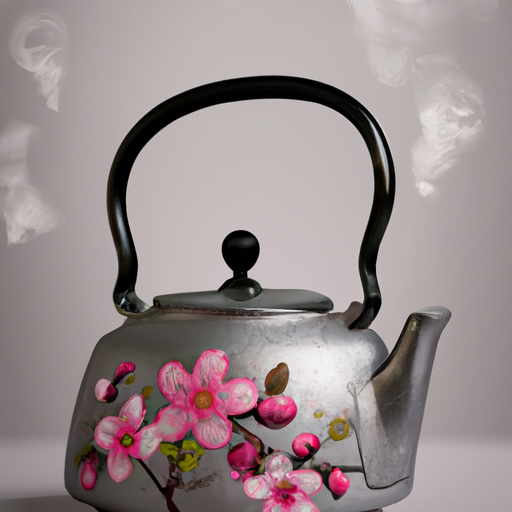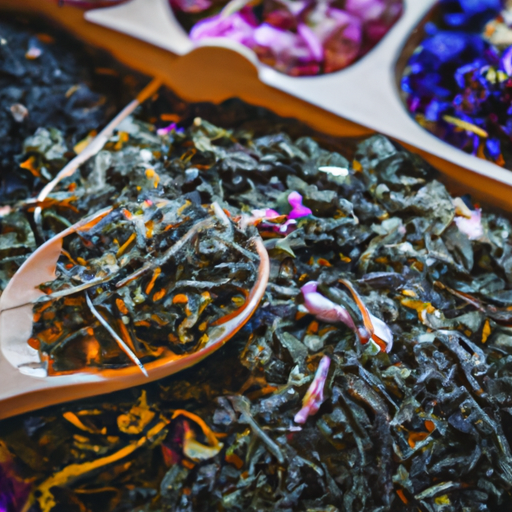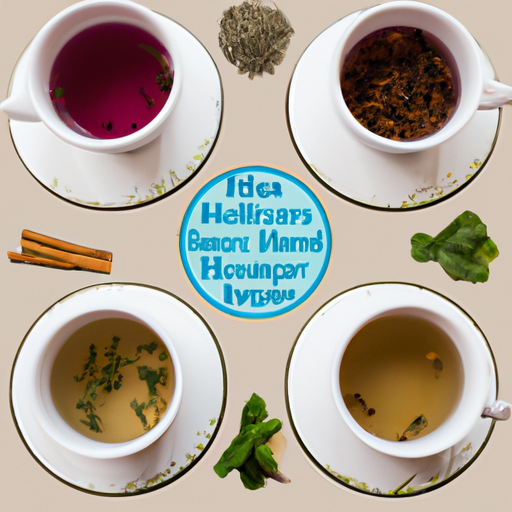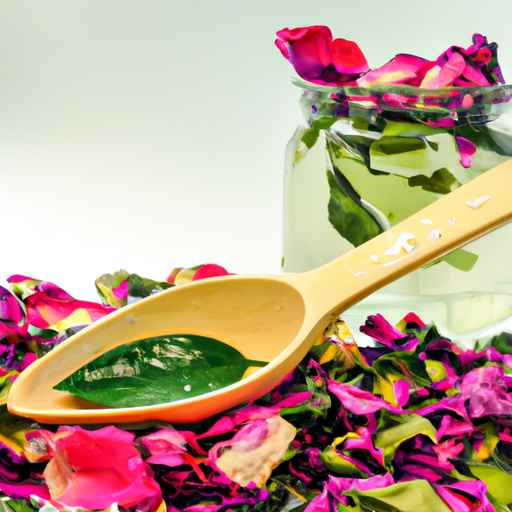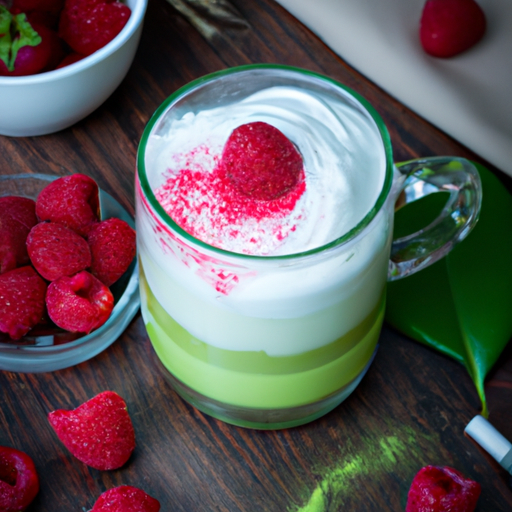Originating from Japan, the cast iron teapot boasts a rich history and intricate designs that showcase its ancient roots.
In the world of tea, there is an enchanting vessel that stands out among the rest – the Japanese Cast Iron Teapot. This timeless treasure tantalizes the taste buds and tantalizes the eyes with its ancient origins and exquisite designs.
With roots dating back to the 1600s, this teapot, known as tetsubin or tetsukyusu, is a true testament to Japanese craftsmanship. Its classic black hue and pebbled surface add a touch of elegance to any tea ceremony. Reputable brands like Kunzan, Nambu, and Iwachu have perfected the art of creating these teapots, with those from the Yamagata region being highly revered.
Not only are these teapots visually stunning, but they also boast exceptional durability. Made with a strong cast iron construction, they are built to last a lifetime. The enameled interior and stainless steel tea infusers ensure a seamless brewing experience. And let’s not forget their incredible heat retention, keeping your tea piping hot for at least an hour.
But it’s not just about functionality – the Japanese Cast Iron Teapot is a symbol of Japanese tea culture, a cherished art form known as chanoyu. It embodies the essence of mindfulness, tranquility, and perfection. Each sip becomes a moment of pure bliss, transporting you to a world of serenity.
So, dive into the captivating world of the Japanese Cast Iron Teapot, where ancient origins meet exquisite designs, and let your tea experience be elevated to new heights.
Key Takeaways
- Japanese cast iron teapots have ancient origins and are known for their exquisite designs.
- They are made of cast iron and have a classic black hue and pebbled surface.
- Japanese cast iron teapots are highly durable and have excellent heat retention, keeping tea hot for at least an hour.
- They are a symbol of Japanese tea culture and add elegance to tea ceremonies, while also being practical tools for brewing tea.
What is it?
I love the Japanese cast iron teapot because of its ancient origins and the exquisite designs it comes in. This teapot has a rich history dating back to the 1600s and originates from the Japanese iron teakettle design called a tetsubin. It is also known as tetsubin or tetsukyusu.
The classic tetsubin is black with a pebbled surface, but now it comes in various designs that are simply breathtaking. One of the benefits of using a cast iron teapot is its durability. It can last for a long time, making it worth the investment. Additionally, these teapots often have an enameled interior and stainless steel tea infusers, making it easy to brew your favorite tea.
However, it’s important to note that uncoated teapots require careful maintenance. To protect surfaces from heat, a trivet is recommended.
Overall, the Japanese cast iron teapot is not only a practical tool for brewing tea but also a beautiful piece of art that adds elegance to any tea ritual.
Design and Durability
Crafted with meticulous attention to detail, these teapots aren’t just visually stunning but also built to withstand the test of time. The design of the Japanese cast iron teapot isn’t just aesthetically pleasing but also has practical benefits for tea brewing.
The cast iron material retains heat remarkably well, ensuring that your tea stays hot for at least an hour. This is especially advantageous when brewing delicate teas that require precise temperatures. Additionally, the cast iron material distributes heat evenly, resulting in a more balanced and flavorful brew.
To properly care for and maintain a cast iron teapot, it’s important to follow a few simple steps. After each use, rinse the teapot with warm water and gently scrub away any residue. Avoid using soap or harsh cleaning agents, as they can damage the enamel interior. Once clean, thoroughly dry the teapot to prevent rusting. It’s also recommended to store the teapot in a cool, dry place to avoid moisture buildup.
With proper care, your cast iron teapot will continue to bring you joy and delicious tea for years to come.
Japanese Tea Culture
Steeped in rich tradition and revered for its artistry, the Japanese tea culture is a captivating world that elevates the act of tea drinking to a sublime experience. Japanese tea ceremonies, known as chanoyu, are formal and intricate rituals that showcase the beauty and grace of tea preparation. Whether using matcha or sencha, these ceremonies emphasize mindfulness, harmony, and respect for nature. Tea is not only a beverage in Japanese culture but a way to promote a healthier lifestyle. The health benefits of tea, particularly green tea like sencha, are well-known. Sencha is a leaf tea that is sweet and strong in flavor, high in vitamin C, and known for its antioxidant properties. By embracing the Japanese tea culture, one can not only enjoy a delicious cup of tea but also embark on a journey of self-reflection and tranquility.
| Japanese Tea Culture | Health Benefits of Tea |
|---|---|
| Japanese tea ceremonies | Green tea is high in antioxidants |
| Emphasis on mindfulness, harmony, and respect for nature | Sencha is rich in vitamin C |
| Promotes a healthier lifestyle | Tea can boost metabolism |
| A journey of self-reflection and tranquility | Tea can improve heart health |
Frequently Asked Questions
How do I properly clean and maintain a Japanese cast iron teapot?
Properly cleaning and maintaining a Japanese cast iron teapot is essential for its longevity. To prevent rust, gently rinse with warm water and dry thoroughly. Avoid using soap, as it can strip the teapot’s natural oils that protect against rust. Use a soft cloth or sponge for cleaning. Regularly oil the teapot’s interior to maintain its seasoning and prevent rust. With proper care, your teapot will continue to brew delicious tea for years to come.
Are there any health benefits to using a Japanese cast iron teapot?
Using a Japanese cast iron teapot for tea brewing has health benefits. It infuses iron into the water, promoting a healthier lifestyle. Compared to other teapots, it keeps tea hot for longer and retains more nutrients.
Can I use a Japanese cast iron teapot to brew different types of tea besides sencha?
Of course, you can use a Japanese cast iron teapot to brew various types of tea beyond sencha. Just remember to adjust brewing times and temperatures accordingly. For delicate teas, use lower temperatures and shorter steeping times. Enjoy the versatility of your teapot!
What is the significance of the pebbled surface on a classic tetsubin design?
The pebbled surface on a classic tetsubin design serves both functional and aesthetic purposes. It enhances heat distribution, prevents rust, and adds texture. It also reflects the rich history and cultural significance of Japanese cast iron teapots.
Are there any special techniques or rituals involved in using a Japanese cast iron teapot?
Using a Japanese cast iron teapot involves specific techniques and ceremonies. These include properly preheating the teapot, using the right water temperature, and serving the tea in a respectful manner. These rituals enhance the tea-drinking experience and showcase the beauty of Japanese culture.
Conclusion
In conclusion, the Japanese cast iron teapot isn’t just a vessel for brewing tea, but a piece of art that embodies centuries of tradition and craftsmanship. Its ancient origins and exquisite designs make it a coveted item for tea enthusiasts around the world.
With its durable construction and ability to keep tea hot for extended periods, it offers a unique and enjoyable tea-drinking experience. For example, imagine sitting in a serene Japanese garden, sipping on a steaming cup of green tea brewed in a beautifully designed tetsubin, immersing yourself in the rich history and cultural significance of the Japanese tea ceremony.

